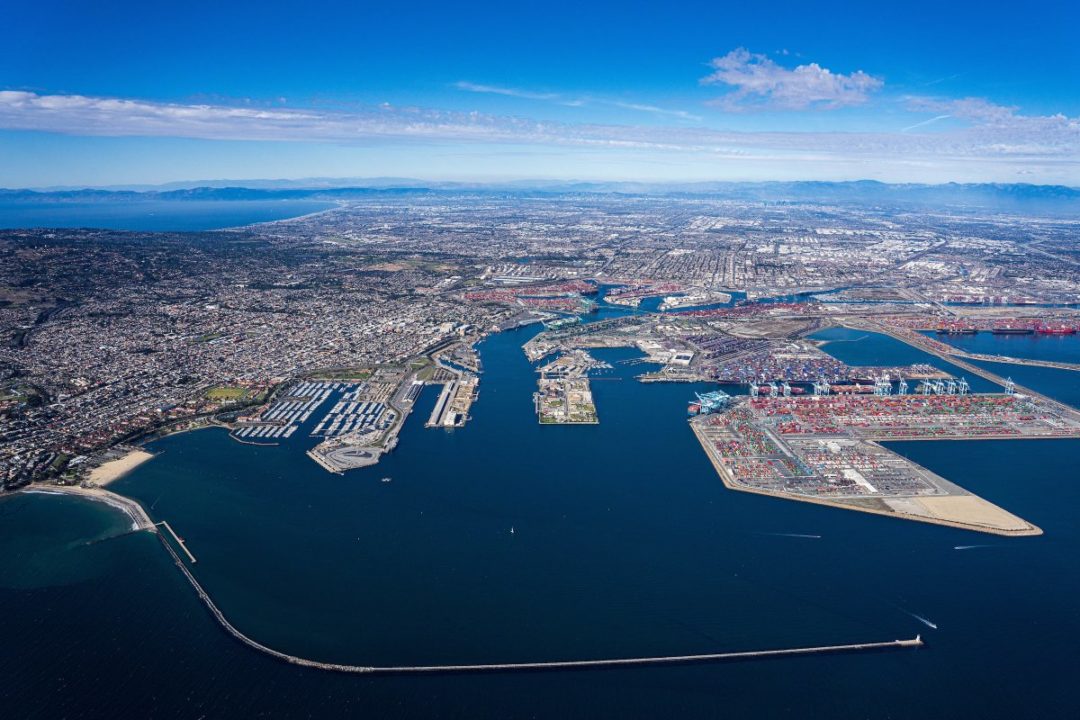Port of Los Angeles re-opens container terminals after work stoppages
Freight and retail groups warn of damage from future freezes as pressure builds to sign contract

All container terminals at the Port of Los Angeles were open and operating today, following several days of shuttered operations up and down the U.S. West Coast due to work stoppages by union dockworkers who have been working without a contract for nearly a year.
Other ports in the region had not shared working conditions as of mid-day Tuesday, but the ports of Long Beach, Oakland, and Seattle had also been affected by the labor slowdown in previous days.
Despite the apparent return to normal operations for maritime imports and exports, U.S. retail groups have been calling on the White House to mediate the sputtering talks between the International Longshore and Warehouse Union (ILWU) and the Pacific Maritime Association (PMA). Retailers said their concern is that an extended work stoppage could lead to increased yard congestion at the ports, freezing the flow of goods just before the critical back-to-school and winter peak retail shipping seasons begin.
That scenario is a valid concern, according to Judah Levine, head of research at Freightos, a Hong Kong-based freight booking platform. “The longer the strike, the larger the backlog, the longer it will take to clear and restore normal levels of operations once labor fully resumes," Levine said in a statement.
In fact, a long-enough labor stoppage would also impact truckers’ ability to pick up and drop off containers, and cause delays and increased storage fees for export containers and for imports already at port container yards or unloaded during a slowdown, he said. It would also cause delays on the water as ships wait to dock, which would tie up capacity and put upward pressure on freight rates, he said.
Fortunately, post-pandemic supply chains have some existing “slack in the system” as the economy slows, allowing some freight volumes to be diverted to East Coast and Gulf ports. But extreme drought in Central America is causing low water levels in the Panama Canal, which could also limit the volumes that can be diverted and is already putting upward pressure on rates to the East Coast, Levine said.
In light of those variables, the American Apparel & Footwear Association (AAFA) today joined other retail groups like the National Retail Federation (NRF) and Retail Industry Leaders Association (RILA) in calling for federal participation in contract negotiations.
"Labor negotiations between the International Longshore and Warehouse Union and the Pacific Maritime Association have dragged on for more than 11 months since the last agreement expired. Despite alignment on some elements of the contracts, there appears to be stalled progress towards a new long-term agreement,” AAFA President and CEO Steve Lamar said in a release.
“Any port closure creates backups that immediately impact the delivery of goods to stores and warehouses, which will adversely impact American consumers, workers, and businesses. Avoiding any further supply chain crisis is crucial to avoid prevent damage to our economy. It is time for the Biden Administration to accelerate efforts to keep all parties at the table for speedy and fair resolution, enabling our supply chains to operate efficiently and responsibly,” Lamar said.
Related Articles

Copyright ©2024. All Rights ReservedDesign, CMS, Hosting & Web Development :: ePublishing